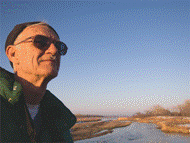Papers in the Biological Sciences

Paul Johnsgard Collection
Document Type
Article
Date of this Version
1974
Abstract
The recent (1972) publication of the Wildfowl Trust's book The Swans has brought together an unprecedented array of information on all of the swans of the world, and makes it desirable to raise once again the question: how many species of northern swans are there, and what are their evolutionary relationships to one another? Delacour (1954) suggested the comprehensive vernacular name 'northern swans' to distinguish 'the various knobless white swans which breed in or near the Arctic parts of the northern hemisphere' from the Mute Swan (Cygnus olor) and the three southern hemisphere swans. The northern swans have generally (e.g. Stejneger, 1882; Wetmore, 1951; Vaurie, 1965) been regarded as constituting four separate species, although as early as 1832 Yarrell questioned whether the smaller North American (Whistling) swan should be regarded as specifically distinct from the comparable Eurasian (Bewick's) swan. Yarrell's observations on the Trumpeter Swan's tracheal anatomy did convince him that it should be regarded as a species distinct from both the Whooper Swan and from the two smaller northern swans. Later investigators who argued for the merger of the Whistling and Bewick's Swan, as well as for conspecificity of the Trumpeter and Whooper Swan, include Hartert (1920), Delacour & Mayr(1954), and Mayr & Short (1970). Thus, two different taxonomic approaches to the group have gradually emerged as shown in Table 1.
A fifth described form, jankowskii, is now believed to be invalid (Vaurie, 1965), as is a supposed Islandic race (islandicus) of the Whooper Swan.
Two major taxonomic questions are present. First, how many species of northern swans should be recognized in order best to illustrate their probable degree of phyletic distinction, and second, if fewer than four are to be recognized, what forms should be merged with what other forms?


Comments
Published in WILDFOWL 25 (1974), pp. 155-161.